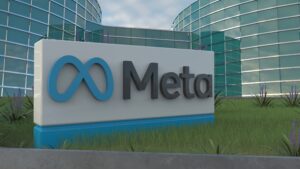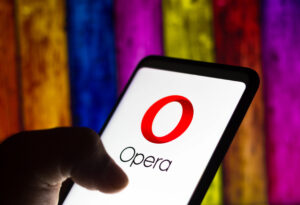As you delve into the rapidly evolving world of artificial intelligence, you’ll encounter groundbreaking innovations that challenge the status quo. One such development is OWL (Optimized Workforce Learning), an open-source AI framework that’s redefining the landscape of autonomous task mastery. Developed by CAMEL-AI, OWL has surpassed proprietary solutions like Manus in both capability and accessibility. This article explores how OWL’s advanced features, including multi-agent collaboration, real-time information retrieval, and multimodal processing, are democratizing access to cutting-edge AI technologies. You’ll discover why OWL’s impressive performance on the GAIA benchmark and its integration with leading language models make it a game-changer in the field of AI-driven task automation.
Introducing OWL: The Open-Source AI Powerhouse

Revolutionizing Multi-Agent Collaboration with OWL
OWL (Optimized Workforce Learning) represents a groundbreaking leap in open-source AI technology. Developed by CAMEL-AI, this innovative framework is designed to facilitate seamless collaboration between multiple AI agents, tackling complex tasks with unprecedented efficiency. By enabling dynamic interactions among AI entities, OWL pushes the boundaries of what’s possible in automated task management across diverse domains.
Cutting-Edge Features for Unparalleled Performance
At its core, OWL boasts an impressive array of capabilities that set it apart from conventional AI frameworks:
Real-time information retrieval from sources like Wikipedia and Google Search
Multimodal processing of various data types
Browser automation via the Playwright framework
Document parsing for Word, Excel, PDF, and PowerPoint formats
Python code execution capabilities
These features, combined with OWL’s comprehensive suite of built-in toolkits, including the Model Context Protocol (MCP) for standardized AI model interactions, position it as a formidable contender in the AI landscape.
Democratizing Access to Advanced AI
Unlike proprietary alternatives such as Manus AI, which often require invitation codes and impose usage restrictions, OWL stands out as a fully accessible, free-to-use platform. This open approach democratizes access to cutting-edge AI capabilities, allowing developers and researchers worldwide to harness its power without financial barriers or gatekeeping.
Unlocking Autonomous Task Mastery with OWL
Revolutionizing AI Collaboration
OWL (Optimized Workforce Learning) represents a paradigm shift in open-source AI frameworks. By leveraging the CAMEL-AI Foundation, OWL facilitates seamless multi-agent collaboration, enabling complex task automation across diverse domains. This innovative platform empowers users to harness the full potential of AI-driven workflows without the constraints of proprietary systems.
Comprehensive Toolkit for Advanced Functionality
At its core, OWL boasts an impressive array of features designed to tackle a wide range of challenges. Real-time information retrieval from sources like Wikipedia and Google Search ensures up-to-date knowledge integration. The framework’s multimodal processing capabilities allow for seamless handling of various data types, while browser automation via Playwright opens up new possibilities for web-based tasks.
Democratizing Access to Cutting-Edge AI with OWL
Unlike its proprietary counterparts, OWL stands out by offering unrestricted access to advanced AI capabilities. With no invites, paywalls, or usage limitations, it democratizes the landscape of autonomous task mastery. This open approach not only fosters innovation but also levels the playing field for researchers, developers, and organizations of all sizes.
Integration with Leading Language Models
OWL’s compatibility with top-tier language models such as GPT-4, Claude 3.5, DeepSeek, and Qwen further enhances its versatility. The ability to operate locally with platforms like Ollama, vLLM, and SGLang ensures flexibility in deployment, making OWL a formidable alternative to premium AI agents without compromising on functionality or performance.
Versatile Capabilities: OWL’s Toolkit and Integration
Comprehensive Toolkit for Advanced AI Tasks from OWL
OWL’s suite of built-in toolkits empowers users with a wide array of capabilities. The Model Context Protocol (MCP) standardizes interactions across AI models, ensuring seamless communication. Specialized tools like ArxivToolkit facilitate research paper analysis, while AudioAnalysisToolkit enables sophisticated sound processing. For developers, the CodeExecutionToolkit offers powerful Python execution abilities, expanding OWL’s utility in software development and data analysis tasks.
Multimodal Processing and Information Retrieval
OWL excels in handling diverse data types, from text to images and audio. Its real-time information retrieval capabilities tap into vast knowledge bases like Wikipedia and Google Search, ensuring up-to-date insights. This feature, combined with document parsing for formats such as Word, Excel, PDF, and PowerPoint, positions OWL as a versatile assistant for research, data analysis, and content creation tasks.
Flexible Integration with Leading Language Models
One of OWL’s standout features is its compatibility with cutting-edge language models. Users can leverage the power of GPT-4, Claude 3.5, DeepSeek, and Qwen, among others. For those preferring local deployments, OWL supports integration with platforms like Ollama, vLLM, and SGLang. This flexibility allows organizations to tailor OWL to their specific needs and infrastructure, making it an adaptable solution for various AI applications.
Democratizing Advanced AI: Why OWL Outshines Manus
Open-Source Accessibility
OWL’s open-source nature sets it apart from proprietary alternatives like Manus AI. While Manus requires invitation codes and may impose usage restrictions, OWL is freely available to all, without invites or paywalls. This democratization of advanced AI capabilities empowers developers, researchers, and businesses of all sizes to harness cutting-edge technology without financial barriers.
Robust Feature Set
Despite its free access, OWL doesn’t compromise on functionality. It offers a comprehensive suite of features that rival or surpass those of premium AI agents. From real-time information retrieval to multimodal processing and browser automation, OWL provides a versatile toolkit for tackling complex tasks across diverse domains.
Flexibility and Integration
OWL’s framework supports integration with leading language models such as GPT-4, Claude 3.5, and DeepSeek. Additionally, it can operate locally with platforms like Ollama and vLLM. This flexibility allows users to leverage their preferred AI models and infrastructure, adapting OWL to their specific needs and resources.
Benchmark Performance
OWL’s impressive score of 58.18 on the GAIA benchmark positions it as the leading open-source framework in its domain. This achievement demonstrates that open-source solutions can compete with and even outperform proprietary alternatives, challenging the notion that premium pricing equates to superior performance in the AI landscape.
Exploring OWL: Insights and Applications
Unlocking Multi-Agent Collaboration
OWL’s innovative framework revolutionizes AI-driven task automation by enabling seamless interactions between multiple AI agents. This collaborative approach significantly enhances efficiency across various domains, from data analysis to complex problem-solving. By leveraging the CAMEL-AI Framework, OWL creates a dynamic ecosystem where agents can share information, delegate tasks, and work in tandem to achieve objectives that would be challenging for a single AI entity.
Versatile Toolkit for Real-World Applications
One of OWL’s standout features is its comprehensive suite of built-in tools. The Model Context Protocol (MCP) standardizes interactions between AI models, ensuring smooth communication and data exchange. Specialized toolkits like ArxivToolkit for academic research, AudioAnalysisToolkit for sound processing, and CodeExecutionToolkit for running Python scripts expand OWL’s capabilities across diverse fields. These tools, combined with OWL’s ability to process multiple data types and automate browser actions, make it a versatile solution for businesses, researchers, and developers alike.
Democratizing Advanced AI Capabilities
Unlike proprietary alternatives, OWL’s open-source nature democratizes access to cutting-edge AI technologies. Its compatibility with leading language models such as GPT-4, Claude 3.5, and DeepSeek, coupled with support for local deployment using platforms like Ollama and vLLM, offers users flexibility and control over their AI implementations. This accessibility positions OWL as a powerful tool for innovation, enabling organizations of all sizes to harness advanced AI capabilities without the constraints of invitations or paywalls.
Key Highlights
As you consider the rapidly evolving landscape of AI frameworks, OWL stands out as a game-changing open-source solution. Its comprehensive capabilities, from multi-agent collaboration to multimodal processing, position it at the forefront of autonomous task mastery. By outperforming proprietary alternatives like Manus AI on key benchmarks while remaining freely accessible, OWL democratizes advanced AI technologies. Whether you’re a developer, researcher, or business leader, OWL offers you the tools to harness the power of AI without constraints. As the field continues to advance, OWL’s open-source nature ensures it will remain at the cutting edge, adapting to new challenges and opportunities. Embrace OWL to unlock the full potential of AI-driven automation in your projects and workflows.
More Stories
OpenAI Expands Cloud Footprint with Strategic Google Partnership
OpenAI expands its cloud infrastructure capabilities by partnering with Google Cloud. The collaboration marks a pivotal shift. OpenAI is now...
Unifying Enterprise Data with Open Table Formats, Transactional Workloads, and Generative AI Integration
Unifying enterprise data has become a cornerstone of strategic advantage as it is not just a technological feat but a necessity.
Google Expands AI-Powered Cybersecurity Operations Across India
Google expands AI-powered cybersecurity operations across India, marking a pivotal step in safeguarding the nation’s rapidly digitizing economy. As cybercrime escalates, particularly in financial sectors reliant on technologies like UPI, Google’s expansion is both timely and critical.
Anubis Ransomware Threatens Data with Encryption and Destruction
Anubis ransomware emerges as a formidable adversary, challenging traditional defense mechanisms with its dual capability of encryption and data obliteration. As a ransomware-as-a-service (RaaS), Anubis not only encrypts valuable files but also employs a unique “wipe mode” that irreversibly destroys data, rendering typical recovery efforts futile.
Taiwan Tightens IoT Gateways with Export Curbs on Chinese Tech Giants
In a bold move echoing through global tech, Taiwan imposed new IoT export restrictions on Chinese giants Huawei and SMIC. Now, Taiwanese firms must seek government approval before working with these companies.
Ultra Ethernet Sets New Standard for Intelligent, Scalable Data Movement in IoT and Edge AI
In the fast-changing world of IoT and edge AI, the Ultra Ethernet Consortium (UEC) launched its groundbreaking 1.0 specification. This new standard redefines Ethernet’s role in smart, scalable data movement.


